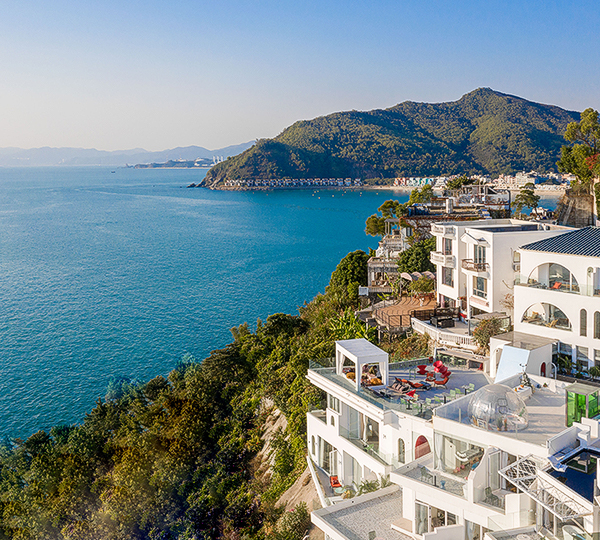

Dapeng New District, established on December 30, 2011, occupies the southeastern tip of Shenzhen. Bordered by the sea on three sides, it adjoins Daya Bay to the east (connecting to Huizhou) and embraces Dapeng Bay to the west, with Hong Kong's New Territories visible across the water. As a pivotal node within the Guangdong-Hong Kong-Macao Greater Bay Area, it spans 295 km² of land (approximately one-seventh of Shenzhen's total) and plans for 1,380 km² of maritime area (about two-thirds of Shenzhen's jurisdiction). Its 125 km coastline accounts for half of Shenzhen's total. The area administers three subdistricts—Kuichong, Dapeng, and Nan'ao—comprising 25 communities, with a resident population of approximately 171,000 in 2024.
Emerging industries gaining momentum
Dapeng is forging an innovation-driven industrial hub powered by "technology + ecology", focusing on strategic emerging sectors including biopharmaceuticals, marine economy, new energy, and low-altitude economy. Key projects like the Baguang International BioValley and Food Valley are accelerating development. Prestigious institutions such as Shenzhen Ocean University, the Deep-Sea Science Center, and Dapeng Bay Laboratory have established campuses here. Industrial anchors include Daya Bay Nuclear Power Plant, the LNG Corridor, and BYD Industrial Park. Notably, its LNG throughput has ranked first in China for four consecutive years. Pioneering low-altitude economy policies and flight testing facilities have attracted the global headquarters of China FAW's flying car division.
Profound historical legacy
The 600-year-old Dapeng Fortress, hailed as the "root of Pengcheng" (Shenzhen's historical nickname), gives the city its abbreviated name. Dapeng preserves 139 immovable cultural relics, including two nationally protected sites. The Xiantouling Neolithic Site (c. 7,000 years old), was recognized among "China's Top Ten Archaeological Discoveries of 2006"; Dongjiang Troop's Old Headquarters, is a witness to the war of resistance against Japan in Guangdong and a national patriotism education base. Four traditions—Straw Dragon Dance, Fisherman's Wedding Customs, Martyrs' Commemoration Rituals, and Dapeng Folk Songs—are inscribed on Guangdong's Intangible Cultural Heritage List.
Exceptional ecological endowment
With forest coverage exceeding 77%, Dapeng hosts 48 of Shenzhen's 50 beaches. In 2024, its annual average PM2.5 density reached 13.9 μg/m³—maintaining the city's best air quality for 12 consecutive years. Its Ecological Index (EI) consistently leads Shenzhen, earning its reputation as the city's "green lung" and "idyllic retreat". Xichong Beach ranks among "China's Eight Most Beautiful Coastlines", while Dapeng Bay and Daya Bay (Shenzhen waters) are designated national "Beautiful Bays". Xichong Community is certified as China's first and Asia's second International Dark Sky Community.
Rich cultural & tourism resources
Nan'ao Subdistrict is designated China's first "International Slow City" within a first-tier city and the Greater Bay Area. Dapeng Fortress Cultural Tourism Zone is honored as a "Guangdong Cultural & Tourism Integration Demonstration Zone", while Tuyang Community is a "Provincial Cultural & Tourism Characteristic Village". Dongshan Luzui and Rose Coast are rated national AAA tourist attractions. Signature events like the China Cup Regatta, Greater Bay Area Sea Dragon Boat Race, and Around Dapeng 100 Ultra Trail attract wide participation. Major developments underway include the world's largest Legoland and Jinsha Bay International Resort—Shenzhen's largest coastal tourism destination.
